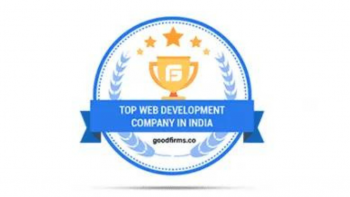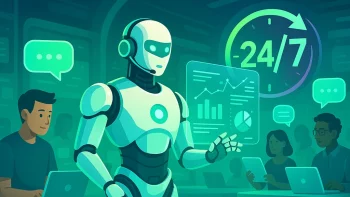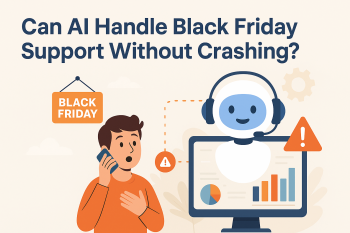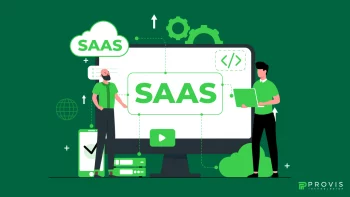Outdated technology in the e-commerce domain is a backward-looking approach that can sink the business. Outdated Ecommerce Technology lowers the efficiency and productivity of the business, causing losses. The accumulation of such losses over the long term can be fatal. A study shows that 93% of business feel that outdated technology is restricting their business growth.
Lack of automation in day-to-day processes is an example of how Outdated Ecommerce Technology affects the business. It may be since businesses want to be cost-efficient and avoid investments up front. This is a good approach if you go by the textbook of finance. However, given the dynamic nature of business and the efficiency that technology brings in investment in technology brings best ROI (Return on Investment).
The recent rise in AI (Artificial Intelligence) technology has helped businesses and employees boost their productivity. Just as any technology does, AI has enhanced the performance of humans by taking over monotonous tasks. Now, if an e-commerce business is not leveraging the benefits of AI and sticking to the old ways will fall behind the competition in the market.
Here, we will see how the outdated technology is hurting the business and how e-commerce stores can utilize it for growth.
Outdated Ecommerce Technology: What problems does it cause
Sticking with old ways is not an apt approach when it comes to technology adoption. Here are a few major problems that an Outdated Ecommerce Technology can cause to the business:
Cart abandonment: The general cart abandonment rate in e-commerce is around 70%. With outdated technology, this number can further go up for an e-commerce store.
- Old technology restricts the adoption of efficient features like single-page checkout
- There are limited payment options for customers, and new payment options like pay by wallet and buy now, pay later are not available
- Calls for lots of manual input from the user that can annoy them, as people have a shorter attention span
Mobile users: Over 65% of traffic on the e-commerce website comes from mobile users. Which means a mobile-responsive and mobile-friendly website is the need of the hour. In the absence of the implementation of the latest technology, the users of the e-commerce store would get:
- Poor experience on mobile and a feeling of lag while scrolling
- The website is not adapting to the screen size and is causing loading issues
- Difficulty in navigating to the web pages due to loading errors
Manual process: Automation software and technology are changing the way e-commerce business is done. They are making the user experience better with:
- Automated personalized messages based on the user’s order and search history
- Real-time tracking of the order via regular updates
- Product list curated for the users as per their preferences
Website performance: Websites that are based on an old framework and technology are not suited for the traffic that is generated these days. In this age of superfast internet, the traffic comes in the range of millions and billions of views. On sales days and festive days, huge traffic can come to the e-commerce store. A website surviving on outdated technology would collapse in front of the traffic. This would:
- Affect the credibility of your business
- Drive the customers away to other stores
- Bring in heavy losses and recovery costs to get the website back on track
Integration issues: There are lots of plug-ins and updates that come in as a part of the advancement in technology. You can understand that by an example: At a time when Android 15 is available, you can’t expect your smartphone to operate effectively with Android 10. There are new security updates, interface, and backend updates that would boost the performance. The same is the case with an e-commerce website working on old technology. It can not integrate well with the new plugins and security patches, and becomes slow and rusty.
Marketing: New-age marketing is very visual and quick with its messaging. Reels, shorts, and trending videos dominate the space of marketing. Websites and apps that work on old technology find it difficult to integrate and share videos with social media. They lack the compression technique used in modern SEO. Thus, if you put a reel or video on your website, it would increase the load time of your website. This also affects the SEO performance, leading to poor rankings.
Security Issues: Old technology provides a gateway for a lapse in cybersecurity. The latest protocols, like TLS and secure payment compliance, Payment Card Industry Data Security Standard (PCI DSS), are not compatible with old-style websites. By their very nature, these are the latest and updated protocols and standards required to make communications secure against emerging threats. An insecure website can create data safety and privacy issues, creating a negative perception of the business in users’ minds.
The way ahead
Technology adoption is the best thing that a business can do for its growth. Being rigid here and sticking to Outdated Ecommerce Technology can only lead to business closure in the end. To get things on track, an e-commerce store should:
- Update the website and install the latest plugins that the CMS (Content Management System) brings in for a smoother user experience
- Invest in making the website cyber secure and compliant with the latest safety standards
- Work on the SEO with a focus on faster loading speed and a responsive website
- Bring in automation in areas like chatbots for customer services, customized emails, WhatsApp messages, live tracking, etc
- Utilize AI in business analytics and analysis to get valuable insights
Conclusion
Technology is the future, and to keep the future of your business bright, you need to adopt it. Just like we adopted smartphones from the landline era, moved to the internet, and embraced AI, it is important to update to the latest e-commerce technology. At Provis Technologies, we help businesses stay ahead by integrating cutting-edge solutions that add efficiency, save costs, and keep them in sync with the competition.
Written By
Author's Picks
- What is a Lean Canvas? Purpose, Key Metrics & Model
- 14/01/2025
- How to Use a Tetradic Color Scheme in 2025: Ideas & Benefits
- 17/01/2025
- Top Features every successful E-Commerce Website needs in 2024
- 24/11/2024
Categories
- AI for Startups
- AI in Web Development
- AI Integration
- AI Platforms
- AI Prompt
- AI Tools
- AI Trading Software
- Android App
- Android vs iOS Development
- Angular
- API
- API Development
- App
- app development
- App Idea
- App User Feedback
- Application
- Artificial Intelligence
- Audit Services
- Automotive Industry
- Awards and Recognition
- Business Consulting
- Business Website
- Chatbots
- CRM
- CRM for Financial Advisors
- Custom CRM
- Custom SaaS
- Custom Website
- Customer Service
- dashboard design
- Developing a Mobile App
- Digital Business
- E-commerce
- EMR Integration
- Finance
- Financial Advisors
- Financial Advisors
- GIT
- Health Insurance
- iOS App
- iOS App Development
- IoT Mobile App Development
- IoT Platforms
- IT Audit Services
- IT Consulting
- IT Strategies
- Java Development
- Laravel
- Lean Canvas
- Learning Management System
- Logistics Apps
- Mobile App Development
- MVP
- Native App
- News Aggregator Site
- OTT
- Outsourcing IT
- Payment Gateway
- predictive analysis
- Product Launch Strategy
- Progressive Web App (PWA)
- Prototype
- Recommender Systems
- Ruby
- SaaS
- SaaS Application
- SaaS Business
- SaaS Company
- SaaS Development
- SaaS Product
- SaaS Project
- Sales Funnel
- SEO
- Shopping Cart
- Software Development
- SSL and TLS
- Startup Checklist
- Technology
- Tetradic Color Scheme
- UI/UX Design Company
- Unit Testing
- User Flow
- User Testing
- Web Development
- Web Performance Optimization
- website Maintenance Services
- Website Migration Service
- Website Speed Optimization
- WooCommerce
- WordPress





